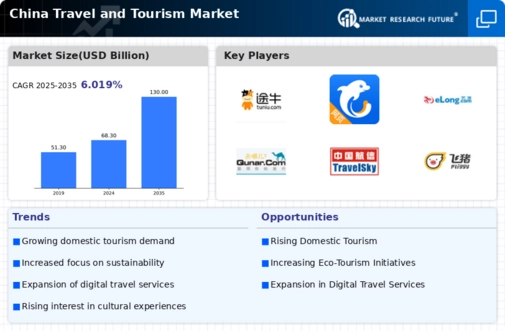The China Travel and Tourism Market has seen a dynamic transformation, driven by advancements in technology and a growing middle-class population that is increasingly interested in both domestic and international travel. Competitive insights within this market reveal a strong emphasis on digital platforms, with various companies developing robust online travel agencies that cater to the preferences of tech-savvy consumers. Rising disposable incomes, coupled with a thirst for new experiences, have propelled numerous players into this vibrant sector.
This heightened competition compels companies to innovate continually, offering unique travel packages, improved customer service, and seamless booking experiences to capture and retain consumer interest.Tuniu has emerged as a significant player in the China Travel and Tourism Market, known for its comprehensive range of travel services that cater to diverse customer needs. The company offers a robust online platform where users can conveniently find and book vacation packages tailored to their preferences. It leverages technology to enhance user experience while also providing a variety of domestic and international travel options that appeal to different market segments.
Tuniu's strength lies in its extensive inventory, competent logistics support, and a strong brand reputation that instills confidence in consumers looking for reliable travel solutions. Its emphasis on customer satisfaction and engagement has cemented its position as a prominent service provider in China's evolving travel landscape.Lvmama stands out in the China Travel and Tourism Market by focusing on a broad array of travel-related services, including hotel bookings, ticket reservations, and tailored travel packages. The company's key products also encompass local experiences and attractions, making it appealing various tourist demographics.
Lvmama's market presence is bolstered by strategic partnerships with various tourism boards and businesses, augmenting its offerings and expanding its reach. Its strengths lie in a user-friendly platform, a wealth of travel resources, and a customer-centric approach that prioritizes feedback and continued improvement. Additionally, Lvmama has pursued mergers and acquisitions that enhance its market capabilities and competitive positioning within the fiercely contested travel sector in China, continually adapting its strategies to the evolving needs of travelers in the region.

















Leave a Comment